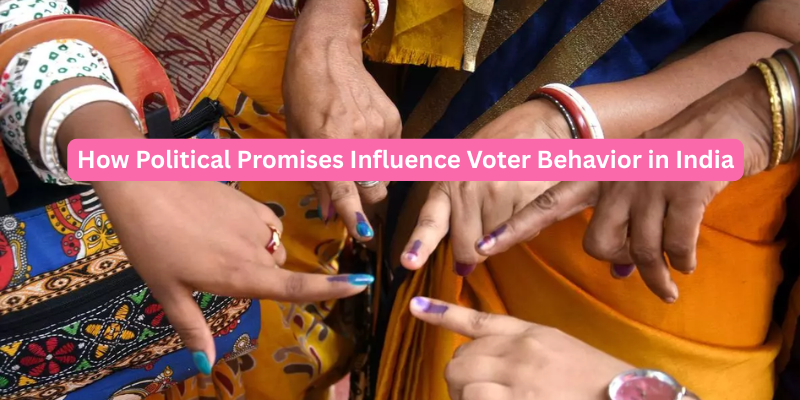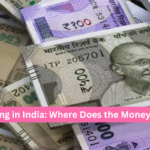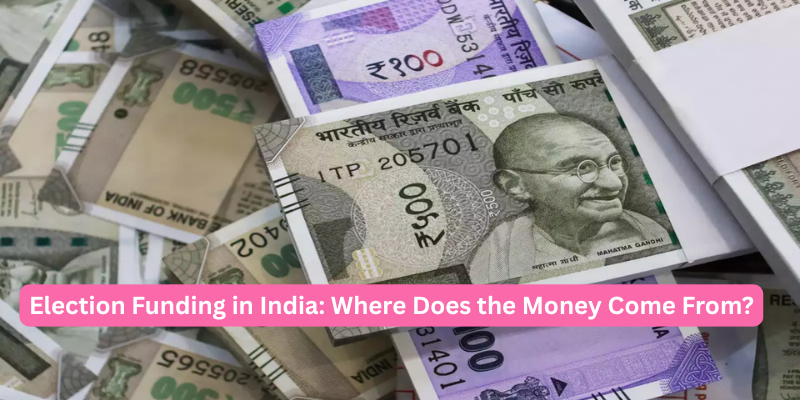India, the world’s largest democracy, is a political powerhouse with over 900 million eligible voters. The diversity of its population—across languages, religions, castes, regions, and socio-economic classes—makes elections both complex and captivating. In this dynamic landscape, political promises have become one of the most powerful tools to influence voter behavior.
From the promise of jobs and development to welfare schemes and free utilities, political campaigns in India are often driven by what parties pledge to do if elected. But how deep is the connection between these promises and how voters cast their ballots? Let’s dive into the evolving role of political promises in shaping voter behavior in India.
1. The Historical Relevance of Political Promises in Indian Elections
Political promises have been a part of India’s electoral discourse since the first general elections in 1951-52. Initially, these promises were largely centered around nation-building—land reforms, food security, and poverty alleviation. Over time, as the electorate grew more diverse and demands became more localized, the nature of promises evolved too.
During the 1970s and 1980s, slogans like “Garibi Hatao” (Remove Poverty) and “Roti, Kapda aur Makaan” (Food, Clothing, and Shelter) gained widespread appeal. These were not just words; they were emotional messages that resonated with millions of Indians striving for a better life. In recent decades, parties have added promises related to technology, urban infrastructure, digital access, education reform, and direct cash transfer schemes to woo newer voter segments, especially the youth and middle class.
2. The Psychological Power of Political Promises
A political promise isn’t just a proposal—it’s a powerful psychological instrument. It appeals to the hopes, fears, and aspirations of citizens. In India, where a significant portion of the population still struggles with basic necessities, promises of subsidies, financial assistance, and improved services can create a strong sense of anticipation.
These promises often serve as an emotional contract between the voter and the candidate. Even when promises are exaggerated or difficult to fulfill, the idea that a politician is thinking about the needs of the people can generate goodwill. This is particularly relevant in areas where voters have had limited access to development or feel ignored by the system.
Another psychological element is identity politics. When promises are made specifically to certain castes, religious groups, or regional communities, they are more likely to feel seen and valued. This builds a perception of inclusiveness, which often results in electoral loyalty.
3. Trust vs. Skepticism: The Voter’s Dilemma
In urban centers and among the educated middle class, skepticism about political promises is relatively high. Many voters now ask: “Will this really be implemented?” or “How will they fund this scheme?” This is a sign of a maturing electorate, where voters demand accountability.
However, in rural regions and among economically weaker sections, promises still hold strong sway. This is not because these voters are naïve, but because these promises speak directly to their immediate needs—be it affordable healthcare, job opportunities, or basic infrastructure. The impact of a single welfare scheme can completely shift political loyalty in such areas.
That said, repeated unfulfilled promises are also making voters more cautious. This is where performance-based voting begins to gain ground. Parties that deliver, even partially, tend to build a reputation that can carry them through multiple election cycles.
4. Case Studies: Promises That Changed Election Outcomes
One of the most talked-about examples is the 2014 general election, when the Bharatiya Janata Party (BJP), led by Narendra Modi, campaigned on the broad promise of “Achhe Din” or “Good Days.” While vague, the slogan tapped into the national mood of economic frustration and a desire for change. The BJP’s emphasis on job creation, curbing corruption, and infrastructural reform helped it secure a historic mandate.
In contrast, regional parties have used targeted promises with great effect. The Aam Aadmi Party (AAP) in Delhi focused on specific, measurable promises like free electricity up to a certain usage limit, improvement in government schools, and affordable healthcare via Mohalla Clinics. These promises were not only delivered to a significant extent but also well-publicized, creating a strong feedback loop that benefited the party electorally.
Tamil Nadu presents another interesting case. In the 2021 elections, the DMK offered free bus rides for women and incentives for young students. These were tailored to economically vulnerable groups and played a key role in shaping voting behavior, especially among female and first-time voters.
5. The Role of Media and Technology in Amplifying Promises
Today, political promises are not limited to rally speeches and newspaper ads. With the explosion of digital media and smartphone usage, parties are leveraging platforms like WhatsApp, YouTube, and Instagram to broadcast their pledges far and wide.
This technological reach means that even voters in remote villages can now watch a leader make a promise in real-time, often in their regional language. This immediacy creates a sense of personal engagement and enhances the believability of the message.
However, this also means that misinformation and overpromising have become easier to spread. A manipulated video or unverified claim can circulate rapidly, shaping public perception before the truth catches up.
Social media also offers a space for real-time feedback. Voters now openly express their doubts, critiques, and support for political promises, contributing to a more participative form of democracy.
6. Do Manifestos Still Matter?
While manifestos are official documents where parties outline their promises and vision, the truth is that most voters do not read them. Instead, the highlights are picked up by the media or discussed during televised debates and in digital news articles.
Yet, manifestos still serve a crucial function—they act as a record that can be used to measure accountability. Think tanks, journalists, and watchdog organizations regularly compare these documents against actual performance, helping to educate the public and maintain political transparency.
7. Challenges with Political Promises in India
One of the biggest challenges is the lack of enforceability. There is no legal obligation for a party to fulfill its election promises. Unless the promise violates the constitution or misleads the public intentionally, no formal action can be taken.
Moreover, there is a growing trend of populism over pragmatism. Parties often announce schemes that are economically unsustainable, just to win short-term favor. Loan waivers, free services, and cash transfers may help in the short run but strain state finances in the long term.
This raises questions about fiscal responsibility and long-term planning. As India aspires to become a developed economy, there is a need for promises that go beyond short-term electoral gains and focus on infrastructure, education reform, healthcare systems, and employment generation.
8. Future of Voter Behavior in India
The Indian voter is becoming more aware and increasingly exposed to information. With higher literacy rates, internet penetration, and political debates being part of everyday discourse, voters are starting to evaluate promises more critically.
However, the emotional pull of a compelling promise remains strong. In many cases, it is not the most detailed or logical promise that wins votes, but the one that feels the most sincere or inspiring.
What’s promising is the rise of issue-based voting—where voters prioritize real concerns like inflation, unemployment, women’s safety, or climate change. Political promises that address these core issues with clarity and sincerity are likely to resonate deeply and influence behavior.
Conclusion
Political promises are more than campaign slogans—they are the bedrock of electoral engagement in India. For better or worse, they influence how voters perceive parties, judge candidates, and ultimately decide who gets their vote. While some promises lead to genuine transformation, others fade away after election day. As India moves forward, the key lies in strengthening political accountability and empowering voters to distinguish between visionary commitments and empty rhetoric.
A vibrant democracy depends not only on the leaders who promise change but also on the people who demand delivery.
5 Commonly Asked Questions About Political Promises and Voter Behavior in India
Q1. Do political promises always influence how people vote?
Answer: Not always. While promises can create a significant impact, especially among undecided or first-time voters, factors like party loyalty, candidate image, local issues, and identity politics also play crucial roles.
Q2. Why do politicians make promises they can’t fulfill?
Answer: Many promises are made to emotionally connect with voters or to match rival campaign agendas. In some cases, parties lack proper planning or resources to implement their pledges after coming to power.
Q3. How can voters verify political promises?
Answer: Voters can refer to past manifestos, use fact-checking portals, and track government performance reports. Many independent organizations now provide tools to compare promises with actual outcomes.
Q4. Are political promises legally binding in India?
Answer: No, they are not legally binding. Although promises are recorded in manifestos, failure to fulfill them does not attract legal consequences unless there’s fraud or misrepresentation involved.
Q5. Can false promises be challenged in court?
Answer: Only if they involve deliberate deceit or breach constitutional values. General political rhetoric and non-implementation of schemes are not typically grounds for legal action.











